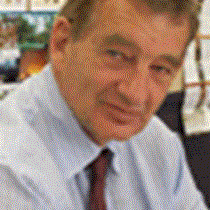Rotorua to Coromandel
The day dawned overcast with spits of rain but there was keen anticipation in the camp, as they were about to embark on that most treasured of cultural experiences in Aotearoa – the Marae visit. It did not disappoint. David gave a brief overview of marae procedure before the guests left the hotel. We travelled quickly to the Ohinemutu Marae, the centrepiece of the Te Arawa tribe whose traditional lands spread from Maketu on the Bay of Plenty coast in the northeast, through Rotorua, to the Tongariro National Park in the west.
Firstly Sonny Corbett, representing the tangata whenua, addressed David and Greg, then led the manuhiri (guests), women first through the paepae, (welcomed on by Aunt Biddy) into the wharenui where the formal welcome began. Men sat in the front, women at the back as is Te Arawa custom. This according to Sonny was because their menfolk respected their women folk, holding them in high honour.
Sonny began the speeches followed by a waiata, an Elvis Presley song. David followed with by a waiata sung by him and Malcolm, Tutira mai na iwi. Sonny’s nephew Shiloh followed for the tangata whenua, both men emphasising the importance of acknowledging their ancestors in the intricately carved room. Then each of the guests performed the formal greeting, the hongi, the ‘breath of life’ as Sonny referred to it, with all of the tangata whenua present. Afterwards Sonny led a Q&A session with the guests, which led into a number of discussions on the history of Maoridom before and during their arrival in New Zealand and the history and stories, including myths and legends associated with the Te Arawa people.
Then the manuhiri and tangata whenua all moved to the whare kai (dining room) where lunch was provided and a small Marae cultural group performed. A highlight for many was some of the men joining in and learning actions to the haka and the women learning to rhythmically swirl the poi. After fond farewells, because the overall impression from the guests was that it was a superb cultural experience, we boarded the busses for the birds at Miranda.
The folks on the larger bus were both entertained and enlightened by Kevin Bates’ extensive knowledge of the geography and history of the areas we passed through. Mike was able to identify a number of local and migratory species present at Miranda although the tide being out meant that many were in the far distance. The trip from there up the scenic Coromandel Coast to the waiting tender on the wharf near Coromandel completed a superb second-to-last day for all.




